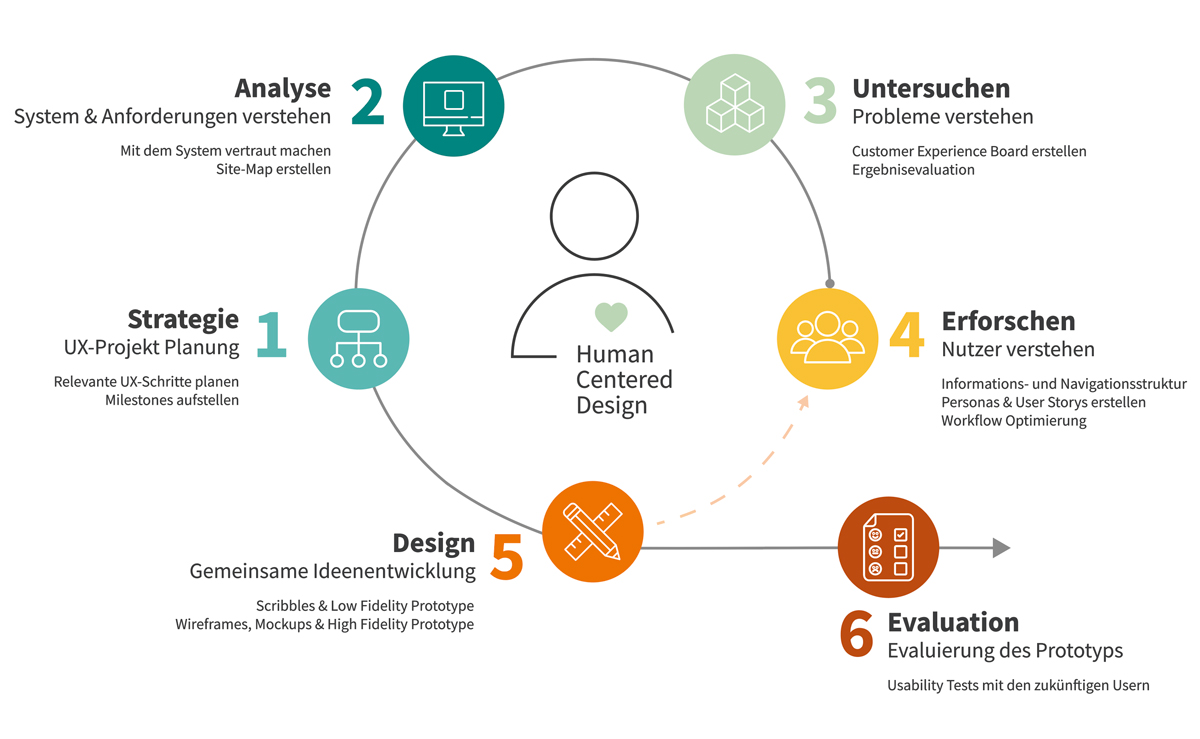
"Involving the future users at the beginning of the development process is essential. This reduces the risk of them rejecting the finished system later on and increases user satisfaction."
FRANK STEINACKER; UI/UX DESIGNER
In the world of business, success hinges on understanding and meeting the needs of customers. While Business-to-Business (B2B) interactions have traditionally focused on transactional exchanges between organizations, a paradigm shift towards a Business-to-Human (B2H) approach has become increasingly vital.
This article explores the significance of human-centered design (HCD) in a B2B context, emphasizing the importance of treating humans as humans rather than mere business entities. By adopting a B2H approach, companies can foster more meaningful relationships with their clients.
In the modern business landscape, customers seek authentic connections and personalized experiences. By recognizing the fundamental human aspect of business relationships, organizations can cultivate a stronger bond with their clients.
Treating customers as humans, with unique needs, desires, and emotions, builds trust and loyalty. Consequently, this approach reduces the churn rate, as customers are more likely to remain loyal to businesses that genuinely value their human experience.

To create an exceptional customer experience, it is crucial to thoroughly understand the target audience. This entails a comprehensive analysis of the customers’ needs, preferences, pain points, and aspirations. By delving into their world, businesses gain valuable insights that inform their decision-making processes.
Understanding the target audience allows companies to develop tailored software solutions that address specific pain points, ensuring a customer-centric approach throughout the entire customer journey.

"Involving the future users at the beginning of the development process is essential. This reduces the risk of them rejecting the finished system later on and increases user satisfaction."
FRANK STEINACKER; UI/UX DESIGNER
In the realm of user experience (UX), it is vital to strike a delicate balance between design and functionality. An excellent UX design resides in the sweet spot where aesthetics, usability, and purpose converge. By seamlessly blending an intuitive user interface with functional features, businesses can create an experience that is not only visually appealing but also highly functional.
This synthesis of design and functionality maximizes user satisfaction, enhancing the overall customer experience and solidifying the business’s competitive edge.
While the creation of a user experience is crucial, evaluating its effectiveness is equally important. Ongoing assessment ensures that user satisfaction remains at the forefront of business priorities. Companies can employ various evaluation methods, such as user feedback surveys, usability testing, and data analytics, to gauge the success of their UX initiatives.
By identifying areas for improvement, businesses can refine their offerings, making iterative enhancements that continuously align with the evolving needs and expectations of their target audience.

"To develop a system and then never touch it again is like a company currently on the fast lane to success stopping to advertise its products."
MELANIE AUFMUTH; UI/UX DESIGNER
In a B2B context, adopting a human-centered design approach is paramount to building successful and sustainable business relationships. By recognizing the importance of treating humans as such, companies can reduce churn rates and foster enduring connections with their clients. Understanding the target audience and addressing their pain points contribute to creating an exceptional customer experience. Striking a balance between design and functionality in the user experience enhances user satisfaction, further solidifying the business’s position in the market. Regular evaluation of the user experience ensures that customer needs are consistently met and surpassed.

LENA SCHÖNLEBEN
junior marketing manager

FRANK STEINACKER
UI/UX DESIGNER

MELANIE AUFMUTH
UI/UX DESIGNER
This might also interest you